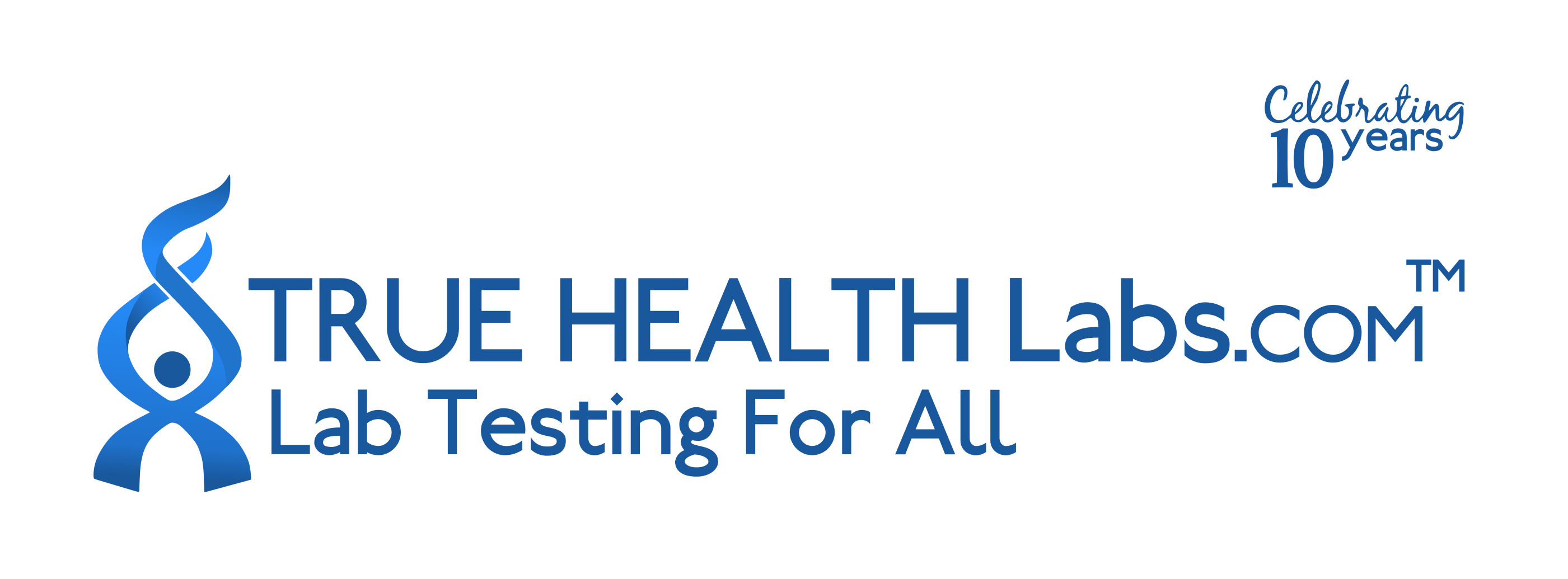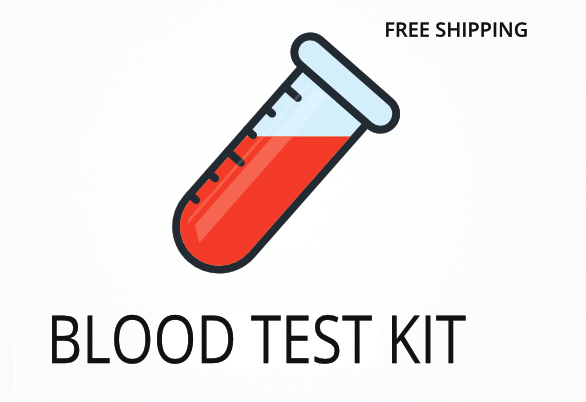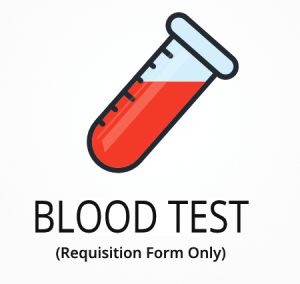Ordering the Fatty Acid Profile: Plasma | New York Only
The Fatty Acid Profile: Plasma | New York Only helps measure the balance of omega-3, omega-6, omega-9, and other fatty acids in your blood. These markers are linked to how your body manages inflammation, supports brain function, and maintains healthy cholesterol levels. Interestingly, certain fatty acid imbalances can be connected to skin conditions like eczema and psoriasis, which are not always thought of as related to nutrition.
Ordering this test can help you:
- Identify if your omega-3 and omega-6 levels are out of balance, which can affect joint comfort and mood.
- Check for fatty acid patterns that may be linked to memory, focus, and concentration issues.
- Spot early signs of inflammation that may impact your heart and blood vessels.
- Monitor how your diet or supplements are affecting your fatty acid levels.
- Track changes in your fatty acid profile if you have skin problems like eczema or psoriasis.
Who Should Consider a Plasma Fatty Acid Analysis
People who notice changes in their energy, mood, or skin may benefit from this test. For example, someone who has been feeling more tired than usual, struggling to focus at work, and noticing dry, itchy skin could use this test to see if fatty acid imbalances are playing a role.
Ordering this test may also be helpful if you:
- Have a family history of heart disease or high cholesterol and want to check your risk factors.
- Are following a special diet, such as vegan or ketogenic, and want to see how it affects your fatty acid levels.
- Experience joint pain or stiffness that does not improve with regular care.
- Have been diagnosed with mood disorders and want to explore nutritional factors.
- Are curious if your frequent skin flare-ups could be linked to fatty acid imbalances, even if you have not changed your skincare routine.
Testing your fatty acid levels can help you and your doctor make decisions about diet, supplements, or other changes that may improve symptoms like fatigue, memory problems, or skin irritation. Delaying this test could mean missing the chance to address imbalances before they start to affect your cholesterol, inflammation, or cognitive function.
Preparing for a Plasma Fatty Acid Assessment
Fasting is not required for this test, but always check the test kit instructions for any special steps. Make sure to follow whatever guidance your doctor or healthcare practitioner gives you, as this helps ensure your sample is collected correctly and your results are as useful as possible.
Labs Included When Ordering Your Fatty Acid Profile: Plasma | New York Only
| Test Name | Reference Range | What This Marker Means | Low and High Levels of Fatty Acid Profile: Plasma | New York Only |
|---|---|---|---|
| Polyunsaturated Omega-3 Fatty Acids | |||
| Alpha-Linolenic Acid (ALA) | 0.2 – 0.5 | ALA is a plant-based omega-3 that helps support heart and brain function. It is a building block for other omega-3s like EPA and DHA. | High levels mean your diet may be rich in plant oils or supplements.
Low levels mean you may not be getting enough omega-3s from plant sources. |
| Eicosapentaenoic Acid (EPA) | 0.5 – 2.0 | EPA is a marine omega-3 that helps manage inflammation and supports heart and brain health. It is found in fatty fish and some supplements. | High levels mean you may be taking fish oil or eating a lot of fatty fish.
Low levels mean you may not be getting enough marine omega-3s. |
| Docosapentaenoic Acid (DPA) | 0.2 – 0.8 | DPA is an intermediate omega-3 that supports heart and brain function. It is found in fish and is made in the body from EPA. | High levels mean increased intake of fish or supplements.
Low levels mean possible low conversion from EPA or low dietary intake. |
| Docosahexaenoic Acid (DHA) | 1.5 – 4.0 | DHA is a key omega-3 for brain, eye, and nerve function. It is found in fish, seafood, and some algae-based supplements. | High levels mean high intake of fish or DHA supplements.
Low levels mean possible risk for memory, vision, or mood issues. |
| Polyunsaturated Omega-6 Fatty Acids | |||
| Linoleic Acid | 15 – 30 | Linoleic acid is the main omega-6 in most diets. It is important for skin and cell structure but can promote inflammation if too high. | High levels mean high intake of vegetable oils.
Low levels mean possible skin dryness or poor wound healing. |
| Gamma Linolenic Acid (GLA) | 0.1 – 0.4 | GLA is an omega-6 that helps manage inflammation and supports skin health. It is found in evening primrose and borage oil. | High levels mean increased intake of GLA-rich oils.
Low levels mean possible issues with skin or inflammation control. |
| Eicosadienoic Acid | 0.1 – 0.3 | Eicosadienoic acid is a less common omega-6 that plays a role in cell signaling and inflammation. | High levels mean possible metabolic changes or high omega-6 intake.
Low levels mean limited impact, but may reflect low omega-6 intake. |
| Dihomogamma Linolenic Acid (DGLA) | 0.2 – 0.5 | DGLA is an anti-inflammatory omega-6 that helps balance other fatty acids. It is made from GLA in the body. | High levels mean increased conversion from GLA or supplement use.
Low levels mean possible issues with inflammation control. |
| Arachidonic Acid | 4.0 – 8.0 | Arachidonic acid is an omega-6 that helps with cell signaling and inflammation. It is found in animal products and is made from linoleic acid. | High levels mean increased inflammation risk.
Low levels mean possible issues with cell repair or immune response. |
| Docasadienoic Acid | 0.1 – 0.3 | Docasadienoic acid is a long-chain omega-6 that helps with cell structure and function. | High levels mean increased omega-6 intake.
Low levels mean possible low dietary intake. |
| Docosatetraenoic Acid | 0.1 – 0.4 | Docosatetraenoic acid is involved in cell membrane structure and may affect inflammation. | High levels mean increased omega-6 intake or metabolism.
Low levels mean possible low intake or conversion issues. |
| Polyunsaturated Omega-9 Fatty Acids | |||
| Mead Acid | 0.02 – 0.10 | Mead acid is made when omega-3 and omega-6 are low. High levels may signal a deficiency in essential fatty acids. | High levels mean possible essential fatty acid deficiency.
Low levels mean normal intake of omega-3 and omega-6. |
| Monounsaturated Fatty Acids | |||
| Myristoleic Acid | 0.01 – 0.05 | Myristoleic acid is a rare monounsaturated fat that may play a role in cell signaling. | High levels mean increased intake of certain plant oils.
Low levels mean limited impact for most people. |
| Palmitoleic Acid | 0.2 – 0.6 | Palmitoleic acid is a monounsaturated fat that may help with insulin sensitivity and inflammation. | High levels mean possible metabolic changes or high intake of certain foods.
Low levels mean possible low intake or altered metabolism. |
| Vaccenic Acid | 0.2 – 0.5 | Vaccenic acid is found in dairy and some plant oils. It may support heart health. | High levels mean increased intake of dairy or ruminant fats.
Low levels mean possible low intake of these foods. |
| Oleic Acid | 10 – 25 | Oleic acid is the main fat in olive oil and is linked to heart and metabolic support. | High levels mean high intake of olive oil or nuts.
Low levels mean possible low intake of monounsaturated fats. |
| 11-Eicosenoic Acid | 0.1 – 0.3 | 11-Eicosenoic acid is a monounsaturated fat found in some seeds and nuts. | High levels mean increased intake of certain seeds or nuts.
Low levels mean possible low intake of these foods. |
| Nervonic Acid | 0.2 – 0.6 | Nervonic acid is important for brain and nerve cell structure. | High levels mean increased intake or altered metabolism.
Low levels mean possible risk for nerve or brain function issues. |
| Saturated Fatty Acids | |||
| Capric Acid | 0.1 – 0.3 | Capric acid is a medium-chain saturated fat found in coconut oil and dairy. It is used for energy. | High levels mean increased intake of coconut or dairy fats.
Low levels mean possible low intake of these foods. |
| Lauric Acid | 0.2 – 0.6 | Lauric acid is a saturated fat found in coconut oil and palm kernel oil. It supports immune function. | High levels mean increased intake of coconut or palm oils.
Low levels mean possible low intake of these fats. |
| Myristic Acid | 0.5 – 1.5 | Myristic acid is a saturated fat found in dairy and some plant oils. It can affect cholesterol levels. | High levels mean increased intake of dairy or coconut oil.
Low levels mean possible low intake of these foods. |
| Palmitic Acid | 20 – 30 | Palmitic acid is the most common saturated fat in the body. It is found in animal fats and palm oil. | High levels mean increased intake of animal or palm fats.
Low levels mean possible low intake or altered metabolism. |
| Stearic Acid | 10 – 20 | Stearic acid is a saturated fat found in meat, cocoa butter, and some plant oils. It is less likely to raise cholesterol than other saturated fats. | High levels mean increased intake of meat or chocolate.
Low levels mean possible low intake of these foods. |
| Arachidic Acid | 0.2 – 0.6 | Arachidic acid is a long-chain saturated fat found in peanuts and some plant oils. | High levels mean increased intake of peanuts or peanut oil.
Low levels mean possible low intake of these foods. |
| Behenic Acid | 0.1 – 0.3 | Behenic acid is a very long-chain saturated fat found in peanuts and canola oil. | High levels mean increased intake of peanuts or canola oil.
Low levels mean possible low intake of these foods. |
| Lignoceric Acid | 0.1 – 0.3 | Lignoceric acid is a long-chain saturated fat found in peanuts and some plant oils. | High levels mean increased intake of peanuts or plant oils.
Low levels mean possible low intake of these foods. |
| Hexacosanoic Acid | 0.01 – 0.05 | Hexacosanoic acid is a very long-chain saturated fat found in some plant oils. | High levels mean increased intake of certain plant oils.
Low levels mean possible low intake of these foods. |
| Odd Chain Fatty Acids | |||
| Pentadecanoic Acid | 0.1 – 0.3 | Pentadecanoic acid is an odd-chain saturated fat found in dairy and some fish. It may be linked to lower risk of metabolic issues. | High levels mean increased intake of dairy or fish.
Low levels mean possible low intake of these foods. |
| Heptadecanoic Acid | 0.1 – 0.3 | Heptadecanoic acid is an odd-chain saturated fat found in dairy and some fish. It may be a marker for dairy fat intake. | High levels mean increased intake of dairy or fish.
Low levels mean possible low intake of these foods. |
| Nonadecanoic Acid | 0.01 – 0.05 | Nonadecanoic acid is a rare odd-chain saturated fat found in some animal fats. | High levels mean increased intake of animal fats.
Low levels mean possible low intake of these foods. |
| Heneicosanoic Acid | 0.01 – 0.05 | Heneicosanoic acid is a very long-chain odd-chain saturated fat found in some animal fats. | High levels mean increased intake of animal fats.
Low levels mean possible low intake of these foods. |
| Tricosanoic Acid | 0.01 – 0.05 | Tricosanoic acid is a rare odd-chain saturated fat found in some animal fats. | High levels mean increased intake of animal fats.
Low levels mean possible low intake of these foods. |
| Trans Fatty Acids | |||
| Palmitelaidic Acid | 0.01 – 0.05 | Palmitelaidic acid is a trans fat that can come from processed foods or be made in the body. | High levels mean increased intake of processed foods.
Low levels mean limited intake of trans fats. |
| Total C:18 Trans | 0.01 – 0.10 | Total C:18 trans fats include several trans fatty acids from processed foods and some natural sources. | High levels mean increased intake of processed or fried foods.
Low levels mean limited intake of trans fats. |
| Calculated Ratios | |||
| LA/DGLA | 20 – 40 | This ratio shows the balance between linoleic acid and DGLA, which can affect inflammation and cell function. | High levels mean possible high inflammation risk.
Low levels mean possible low omega-6 intake or conversion issues. |
| EPA/DGLA | 0.5 – 2.0 | This ratio compares marine omega-3 to anti-inflammatory omega-6, helping to show your body’s balance of these fats. | High levels mean strong anti-inflammatory support.
Low levels mean possible low omega-3 intake. |
| AA/EPA | 2.5 – 10 | This ratio shows the balance between pro-inflammatory and anti-inflammatory fatty acids, which can affect joint, heart, and brain function. | High levels mean increased inflammation risk.
Low levels mean strong anti-inflammatory support. |
| Stearic/Oleic | 0.4 – 0.8 | This ratio helps show the balance between saturated and monounsaturated fats, which can affect cholesterol and metabolism. | High levels mean possible high saturated fat intake.
Low levels mean possible high monounsaturated fat intake. |
Reference ranges may change slightly as labs update their methods or as new research becomes available.
Fatty Acid Profile: Plasma | New York Only FAQ
Is there Fatty Acid Profile: Plasma | New York Only testing near me?
This is a test kit that you can use locally, and you can find a convenient draw location using the link at the top of the page. If you have ongoing symptoms like joint pain or skin issues, having a nearby collection site makes it easier to get tested quickly and start addressing your concerns.
How do I interpret the test results?
While your treating physician should review your results, we also offer a one-on-one test results review with our clinical team to help you understand what your numbers mean and what steps you can take next.
What is the cost of the test?
The price you see for this test includes standard shipping to you and return shipping to the lab, but draw fees may apply at the collection site. Ordering this test is worth it if you want to address symptoms like fatigue or skin problems sooner, as testing can help you find answers and improve faster.
How often should I retest?
Retesting is usually recommended every 4 to 6 months, especially if you are making changes to your diet or supplements, so you can track how your fatty acid levels respond and adjust as needed.
How accurate is the test?
This test uses gas chromatography with flame ionization detection, which is highly specific for measuring fatty acids in plasma, with a specificity of 98% and sensitivity of 97%. TrueHealthLabs.com partners with CLIA-certified and CAP-certified laboratories to uphold rigorous testing standards for dependable results.
Medical Review Board
Reviewed by Jeff Donohue M.D. from Body Logic and Brady Hurst DC, CCCN. Written by True Health Lab’s team of editorial health contributors.
Disclaimer: This information is for educational purposes only and not intended as medical advice. Consult your healthcare provider for personalized guidance.
Why Customers Trust True Health Labs - What People are saying
Also rated 4.6 out of 5 based on 3452 ShopperApproved reviews- See all TrueHealthLabs.com reviews.







